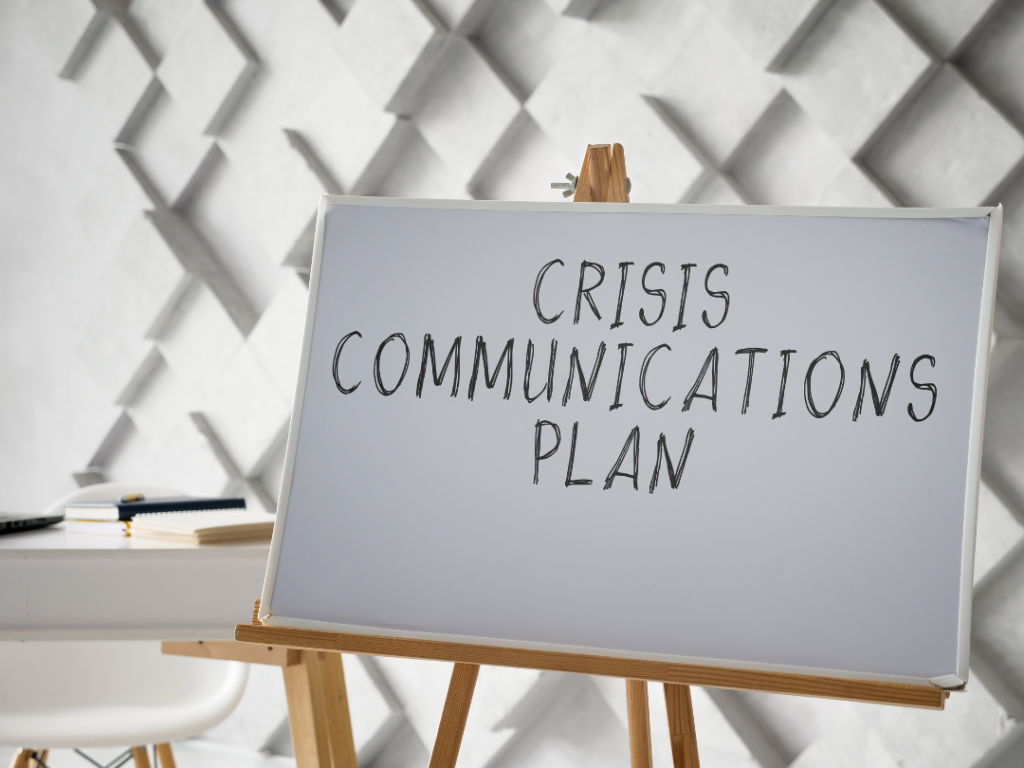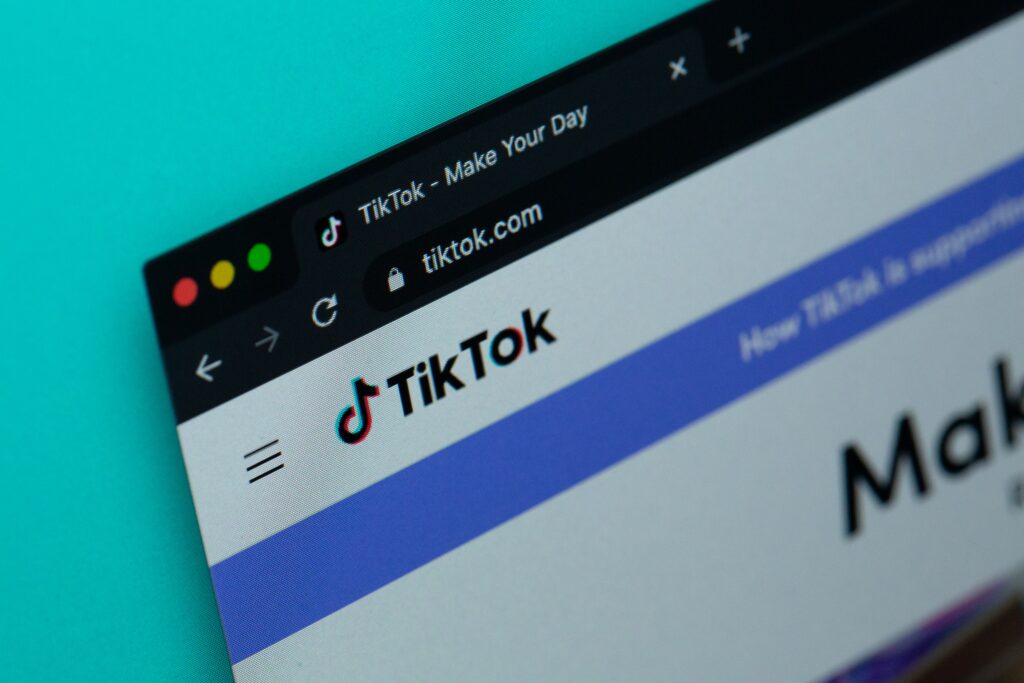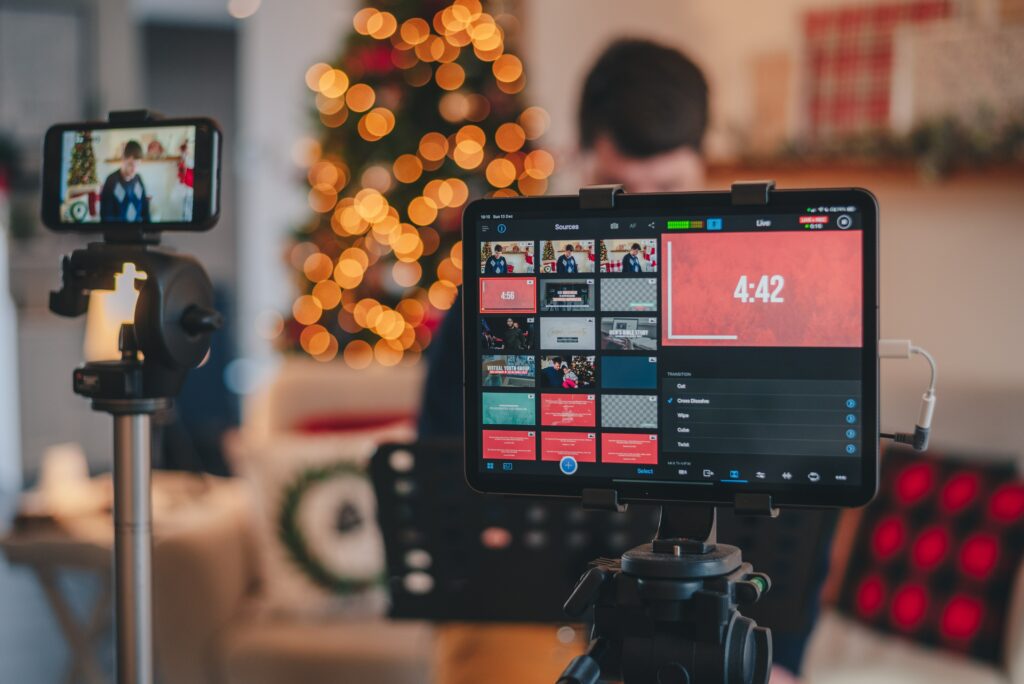We are often asked, “What is crisis management?” and “What are the stages of crisis management?” This blog article strikes at the core of what to know and how to act.
Here is a crisis: Your business doesn’t have a crisis communication plan in the back pocket. If this is true, it is past time to plan and assemble one, so you’ll be better equipped to manage all potential crises that could be looming.
Don’t know where to start? Let’s begin by exploring strategic crisis communication plans and why every business needs one.
What is a Crisis Communication Plan?
In a time of crisis, how a business strategically communicates with its clients or customers, key stakeholders, media members, and general public (A.K.A., crisis communication) directly reflects how the occurring crisis plays out. Additionally, success in these precarious situations is defined by how well the company effectively communicates – immediately and productively – and recovers in the long run. To that end, a crisis communication plan brings order to the chaos by providing a set of guidelines for a business to follow and execute at the onset and throughout the duration of a crisis.
The purpose of any good crisis communication plan is to provide a general resource and guide to company leadership regarding the fundamental tenets of effective communications during times of extreme difficulty, upheaval or calamity. The plan, once developed, also provides strategies for messaging development and management as well as insights for addressing or interfacing with all critical and impacted groups, including social media users and print, online, digital, and broadcast media members during crises.
Why is a Crisis Communication Plan Important?
Given the current volatility of world affairs and the magnifying spotlight placed on companies via social media, more companies than ever are seeking public relations and marketing agencies with expert crisis communication services and the acumen needed for developing and executing effective crisis communication plans. Whether it be an established corporation or an emerging start-up business, an organization’s success is neither definite nor impervious to the consequences often arising from a crisis.
While the mere thought of a crisis for a business or brand may be distressing, developing an effective crisis communication plan can help your company weather the storm of any crisis to better ensure an outcome with less turmoil, fewer mistakes and minimized repercussions.
Ultimately, develop a plan before crises happen.
How to Create a Crisis Communication Plan
The 5 Cs of Crisis Communication
All judicious program plans for a business should have supportive frameworks, and a crisis communication plan is no exception. Above all, create a crisis management handbook.
Before developing a crisis communication plan, it is vital to first understand the basic principles which provide its support: Care, Commitment, Competency, Channels, and Continuity.
Care: A crisis is no time to showcase actions and communication that are characterized by a lack of good sense, seriousness and worthwhile purpose. If your communication fails to demonstrate the proper care the situation demands, innumerable problems will arise exacerbating the crisis at hand. Create a crisis communication plan that meticulously and thoughtfully addresses all pertinent groups and their potential needs. Consider, assess and include your employees, stakeholders and investors, customer or client segments, reporters and journalists, influencers, and all other audiences germane to your business.
Commitment: Illustrate a commitment to resolving the crisis and all its effects, as well as mitigating the chance of its reoccurrence. Moreover, committing to timely and frequent communication with all publics, including those with the power to positively or negatively alter the outcome for your business, is an essential characteristic of effectively handling a crisis. Your plan should lay the groundwork, anticipating and outlining the ways in which you, your C-suite and public relations agency will lead during the crisis versus being victimized or scandalized by it.
Competency: Audiences will render their judgments by gauging how well your company or representatives conduct messaging online and perform in front of the media. If you come across as capable through direct interactions with your audiences and communities as well as competent during interviews with the media, these forms of demonstrated insightfulness regarding all matters of the crisis will increase the chances you and the company will be deemed proficient.
Channels: Knowing where to communicate is just as important as knowing what to communicate. Well before a crisis, conduct an audience analysis. If you think you understand all the detailed specifics about your key audiences, consider if you and your leadership team have unearthed exactly how and where these integral groups tend to obtain their important information. If not, your crisis communication plan should involve an exploration of message dissemination that will actually reach your constituents.
Continuity: When planning and executing a crisis communication plan, clear and sustaining message continuity should be top of mind. For example, if a social media post does not exactly match up with the words of your CEO, audience misconceptions may occur, and your ability to control the narrative will diminish. The spoken and written word should always correspond during a crisis. When it comes to continuity, more C’s play an adjacent role; communications with correctness and consistency will strengthen the trust factor among your audiences, giving them an increased level of confidence in how your business is managing the crisis.
These 5+ Cs should be at the heart of every message delivered to your audiences, especially in a time of crisis. You will only be prepared to do so with an advanced plan developed before a crisis, not during one. It is vital to know and execute these principles while understanding the significance of each. Plan, plan and plan ahead; because, without these pillars, there is no ground on which you and your business can stand during the crisis.
Four Essential Elements of a Crisis Communication Plan
Now that our foundation is set, let’s explore the essential elements of a crisis communication plan. While not an exhaustive list, the following elements are common themes of the best and most productive crisis communication plans.
Assess potential crises: It’s impossible to foresee every potential crisis looming over your business. However, it is possible to identify universal business threats as well as brainstorm the types of crises that frequently arise within your industry and/or sector. From there, every potential crisis should be assessed in terms of the “what if” scenario, along with a preplanned strategy attached.
The focus of this portion of the plan should involve an assessment of crisis levels in terms of probable or likely dissemination of inaccurate or negative information that is based upon incidents, consumer opinions, hearsay, or propaganda, and that which can create communication issues and adversely affect the company’s reputation and brand perception. Usually, four levels of crisis are evaluated. Our PR team utilizes the following for most of our applicable clients’ crisis communications:
Level 1 = Most Serious or Most Potential Risk or Impact
Level 2 = Moderate Potential Risk or Impact
Level 3 = Low Risk or Impact
Level 4 = Unlikely Risk or Impact
Choose a spokesperson and create a crisis communication team: Who shall speak on behalf of your business when a crisis suddenly emerges? – You? Your CEO? When a crisis hits, the public narrative wastes no time being formed; therefore, you won’t have a second to waste. Decide and include your company’s spokesperson within your crisis communication plan and be ready to address internal and external groups and the media as soon as possible; and, this means quickly.
Your crisis communication plan must include what we like to call “The Line of Defense Team,” comprising leadership personnel who have been educated in the elements of your crisis communication plan. Each participant should have a copy of the plan accessible at all times with listed or charted individual and premeditated responsibilities.
Develop the plan as a workflow with each leader’s scope of responsibility clearly explained to encompass pre-crisis plan management and maintenance as well as activities and duties to handle during the crisis. Aspects of anticipated post-crisis administration are also wise to incorporate into the plan. These prewritten, general action items and timelines are intended to help your business leadership assess, address and attempt to resolve communication issues in regard to projected incidents.
Know your audience: Your audience is more than those who regularly comment on your Instagram posts. Companies commonly approach crisis communication with an exclusive focus on their customers and communities, showing little regard for their employees and other internal stakeholders. When developing and executing a crisis communication plan, make sure no stone is left unturned when identifying and communicating with your audience.
Identify your audience groups regarding whether they have direct or indirect interest versus influence. Consider your various audience types in terms of their “interest” or “influence.” Depending upon the type of crisis, select segments will hold general interest in the crisis and its related information, though with minor applicability for gains or losses. At the other end of the audience spectrum, a highly relevant group will not only have interest; they will also possess a great deal of influence over how they handle, address or speak about the crisis.
An individual crisis will require an assessment of segments and their figurative or actual stakeholder positions in comparison to potential positive, negative or neutral influence. This is integral to making decisions about how closely to interface with the segments and how often communications are required.
Develop consistent and succinct messaging on all channels: Nowadays, companies disseminate information via an expanding variety of communication channels (e.g., social media, onsite messaging, broadcast television, press conferences, emails, etc.). While having and employing different channels of communication is an essential part of an effective crisis communication plan, developing consistent and succinct messaging across said channels is just as important.
Execute the Crisis Communication Plan in a Time of Need
The cardinal rule of crisis communication is similar to medical operations. “First, do no harm.” Kick off your plan immediately.
When it comes to executing a crisis communication plan: timing is everything. Companies that create and maintain crisis communication plans in advance of being needed will be in a better position to control the public narrative.
Implementing your plan involves the opportunity for you and your company leaders and agency to prevent ineffective, unfavorable or detrimental responses to serious crises. Moreover, appropriate crisis communication procedures inspire or beget the trust and confidence that are vital in a challenging situation.
The 24-hour news channels and nontraditional media, vlogs, blogs, and social media can propel a news story or cycle that makes it critical for organizations to actively prepare for crisis communications.
An actual crisis often involves a volatile combination of public reaction and gossip or hearsay. This form of destabilized information makes it essential to give careful thought, albeit expedited, to information that will be stated or distributed, before making public releases or comments. This refers to the gamut- from social media posts to news conferences.
Evaluate the environment into which statements or information should be introduced, so your plan’s drafted messages can be further crafted and shaped to fit the problem or disaster.
Ask these critical questions at the onset:
- Is my crisis communication plan’s primary lead up to date about the matter and beginning to deploy the workflow?
- Which intel is critical to convey to prompt appropriate public responses in terms of the crisis?
- What are the opportunities for successful communications, and how can they be managed and maximized?
- What are the messages to be delivered prior to, during and after the incident?
- Are there obstacles to efficient crisis communications, and how can they be minimized?
- How might/will the media cover the news related to the crisis, and what are the ways in which to work with reporters?
- What questions can be expected from customers, vendors, employees, the public, media members, etc. throughout the situation?
Schedule the first and quick phone conference or meeting with your crisis management team to begin dissecting and dealing with the state of affairs. Rate and review the crisis situation to determine if your prewritten plan’s list of initiation items for management and communication is viable based on the present conditions.
Your plan’s pre-drafted message templates and statements should be finalized as necessary to address emergencies or other timely communications. Move forward with specific statements that could be needed to address individuals, peers, colleagues, or family members of impacted or potentially affected persons, to follow possible statements to and for the media and general public or suitable communities.
In the moments to days that follow, work through the “response” section of your crisis communication plan with the help of your leadership colleagues and public relations agency. From notifying the applicable parties and stabilizing the physical setting to activating your team and their workflow, stay calm and be focused.
What are Examples of Business Crises?
Let’s consider Pepsi and the infamous Kendal Jenner commercial that tried to settle racial injustice and police brutality with a simple can of Pepsi.
Shortly after this commercial went live, Pepsi and Kendal Jenner faced severe backlash for trivializing the social issue. Nevertheless, Pepsi wasted no time by quickly pulling the ad and offering a statement of apology. While some negative sentiment may still reside, Pepsi’s overall crisis communication plan highlights the timeliness and sincerity needed for preserving the integrity and reputation of a brand in the face of a crisis.
BP Plc., on the other hand, did nothing of the sort. When an oil rig in the Gulf of Mexico exploded, resulting in the deaths of 11 people and an environmental disaster, BP Plc. was slow in responding to the media, taking three whole days to verify and relay the cause of the explosion. Moreover, BP’s top management failed to address stakeholder and public concerns in a timely manner during the fallout of the crisis. Consequences? — A brand reputation tarnished and in need of restorative action.
If you want to have a say over the narrative and emerge from a crisis with your brand reputation intact, develop and roleplay your crisis communication plan well before a crisis presents itself. Then, deploy your plan – modifying or customizing it as needed – at the moment you become aware of the situation.
Conclusion
Threats are everywhere, surrounding everyone and everything, including companies with renowned success and rock-solid reputations. While it may not be a miscalculated commercial or an environmental disaster, a crisis can hit your business at any moment.
An effective crisis communication plan derives its framework from the five Cs as explained in this narrative and comprises all the essential elements with no stone left unturned. Do not put off until tomorrow what you and your business can do today to become prepared and properly equipped to manage a crisis and its ensuing chaos.
Contact our public relations team to learn more about an effective crisis communication plan specific to your business and brand.









